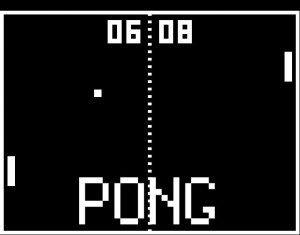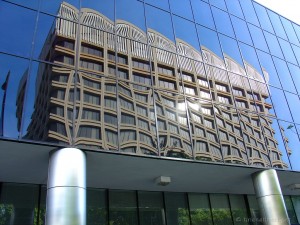Posts Tagged technology
3D Capture and Use : Not even at the Pong Level…..Yet
Posted by Jim Foster in 3D, New Technologies on November 17, 2014
We are still at the bleeding edge of the 3D capture technology. Even though LIDAR has been around since the early 60’s, commercialization of it remains small. Its projected market for 2018 is $515 million. What does that tell me? That’s ridiculously low. For perspective Facebook’s market cap is around $200b, EA Sports, the game producer for ubiquitous gaming technology is around $12b. Those are single companies not an industry. The total market for LIDAR, that is 3D capture of real objects is going to be $515M in 2018. Something else needs to happen to bring 3D to the main stream, and what’s happening now is the introduction of light weight inexpensive 3D sensors from a who’s who of technology companies. A partial list and by no means exhaustive.
- Intel Real Sense Technology
- Project Tango from Google
- Structure io
- Kinect from Microsoft
- Paracosm
- Meta io
- Autodesk 123D Catch
- Acute 3D
- Photosynth
- PrimeSense – Acquired by Apple
And from the way back machine:
Pong, the granddaddy of all video games was arguably the first commercial/consumer success of the gamification of a piece of hardware and its enveloping logic, in the case of pong it was TTL (Transistor – Transistor Logic ). So what’s important to note here is the players now involved in the introduction. Intel, Google, Microsoft, Apple…….. We have the introduction of the hardware and their SDK packs for developers. The next stage will be most interestin; .the software, the games, the apps, the big easy. The other technology beyond these new sensors and LIDAR in most use; photographs. Right now I see in the market a lot of people taking pictures of statues or people, turning them into a 3D Digital object and then maybe printing them out on a 3D printer, I don’t see that as a viable business model, personally I don’t want a 3D printed object of anyone I know and to me it borders on ventriloquist dummy creepiness. However, we need to go through these stages to get to whatever breakthroughs and or commercial successes there will be in the future.
3D printing is moving rapidly, if not into the mainstream, into real uses. The 3D printing market is estimated to be $16.2 billion in 2018 comapred to $2.5 billion in 2013. That is 30x the expected LIDAR market. Why? Companies are printing machine parts (cars, airplanes, etc.) there is movement toward biological printing of food/meat and body parts. So really the mass customization of things where before making one of anything could cost thousands of dollars. I recall prototyping parts through CNC machining or SLA cost at a minimum hundreds of dollars and for bigger parts easily thousands and up. At back to school night this year they had amakerbot set up in the High School lobby and would print out key chains with your initials for a $5 donation. Holy What? Really? How about 3D printing a partial titanium skull to help someone after the original was smashed in an accident. But 5 bucks for a custom printed 3D object?
So what’s the next step in the 3D scanning world now that people can start getting them in their hands for hundreds of dollars, opposed the LIDAR systems that start around $50K. You and your friends scan your house and drop it in as a map pack for Call of Duty. 3D virtual tours of the Louvre. 3D estimating of car damage…….I’m really not sure but I am sure there will be plenty of people working on it. Making the capture and use of 3D easy, that will be the magic trick. Why you might want to is a bigger question. What do I need 3D data for? For real estate? Who is ever going to buy something without physically seeing it. To quote a commercial broker when I was doing some biz dev, “I get them in the car and show it to them…” Remember the broker business is intensely personal so A) they want technology to help them not replace them and B) I am not sure having great 3D imagery is going to sell it. Maybe as part of the tenant fit out allowance they get 3D Design services, or as part of the negotiation you show them what it could look like with their allowance…..I would be really interested in what people think about this subject beyond it’s cool.
****
For something cool, check out the video posted for Mok3 above, Yonald and his cohorts had figured out a way in 2003 to take pictures and turn them into 3D environments., the world is still catching up.
What Owners Need to Know When Documenting Existing Buildings ….Part II
Posted by Jim Foster in BIM, Built Environment on September 4, 2014
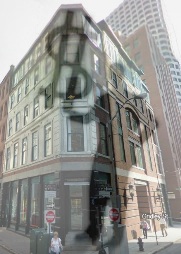
I recently was invited to present for an IFMA Technology Council Webinar (Link to Deck Here). Both Carlos Vasquez from Epic Scan, the other presenter , and myself had come both mostly to the same conclusions having never met and working on two different coasts. “It really is the wild west out there.” For instance, there are no standards on deliverables or when putting out an RFP for this kind of work. Plus, there are a lot of people out there buying scanners and saying they can do everything that comes in the literature with the hardware. However, owning a piece of hardware and being competent at it are two vastly different things. Just because I own a pair of skates doesn’t mean I can get on the ice with the Rangers. Plus, if the firm you are hiring only has one piece of hardware expect that the quote you get will be one size fits all.
My approach to any given job is to have a detailed conversation with whoever is going to use the Revit Model or Data and what they need it for. For example, an owner doing due diligence on a property has vastly different need and budget then an architectural firm doing an adaptive reuse project on 200,000 SF of Industrial Mill Space. So we tailor the project and technology around their needs and budget. I would argue that an owner look at each project and start with the minimal viable product (MVP) or data set they need and then add details as the project warrants. With that said the base line product should still be solid. For example, we might be asked to come in to verify square footages of a building during due diligence. This is to make certain that the prospective owner has faith that the marketed 100,000 SF actually is 100,000 SF of rentable space. This might just require us to get the shell and cores correctly. But be certain that is done well enough so if going forward we need to add the mechanical plant, or interior partitioning, etc. we have a good foundation to start from.
If you are looking to document your building for almost any stage, due diligence, BOMA calculations, Interior Design, Adaptive Reuse there are a couple of things to keep in mind.
• Size and Complexity of the Project
• Interior/Exterior
• Deadlines and Time Constraints
• Budget and Available Resources
• Uses for Models
and when choosing a vendor or service provider…get references, see if they have done similar projects, ask them about their process and their technology. When done right having a model or your building documented properly, accurately pays dividends many times over, when done wrong it has Excedrin written all over it.
3 Myths About Laser Scanning and Point Clouds for Architecture and the Built Environment
Posted by Jim Foster in Built Environment, Laser Scanning, New Technologies, Point Cloud, Point to Point Laser Technology on September 16, 2013
Are laser scanners and their resulting pointclouds right for you and your project? As with all lists, it is simplified and of my opinion. Whether you want to trust my opinion, well that’s up to you, but my company Interioreview has, for over a decade, surveyed / drafted / modeled hundreds of buildings and starting in 2006 delivered Revit Models of existing buildings. My company, PointKnown, has created an Add-In to Revit that allows you capture and model buildings as you measure, in real time with a hand held laser. Now that I’ve blown my own horn here are my top 3 Myths:
It’s Foolproof and Error Free.
Wrong. I have not once received a model from a ‘pointcloud’ surveyor without dimensional errors in the model. Not once. Only because of our internal controls and surveying was I able to call out the errors and was not satisfied with other companies internal controls that the errors would have been found if my company had not found them. Such that we now will do all the modeling in house. Just because someone has a scanner does not mean they do it well.
it is concluded that features such as reflectivity, color, and brightness of the object surfaces have impact on the quality of the data, therefore, although 3D point cloud data is very useful it should be considered that the data can be sometimes irregular and corrupted and thus not exactly reflecting the features of the scanned object.
It’s Easy to Produce a Model From a Pointcloud.
Holy cow, no. How many technologies come into play to get a scan created, consolidated, registered, exported, modeled? First the hardware/scanner, whether it’s from Leica, Faro, whoever, they have their own software to manage the scan/cloud, and then you can export/import to Revit to use as a background to model over. You can use other technologies to help with this process such as Scan to BIM, or to cut portions of the pointcloud you can use ReCap, export to Autocad and re-import that data into Revit, etc. My point being there are a variety of methods to get from here to there but they are not necessarily consistent and have their strength and weaknesses, but you are using human power to make those decisions at each step. And then you are essentially using the pointcloud to ‘trace’ over. That is, you cut sections of the pointcloud in what ever view you are working in and trace over them. Has the person ‘modeling’ the building ever surveyed a building? Or have construction or architecture experience to know how a building should be put together. Does the architect really want to see a wall with a .08 degree deflection of wall off 90 degrees because it will create numerous amount of Revit errors, and was it really there or was the pointcloud interpreted incorrectly? There is no easy button.
It’s Cost Effective
Putting a scanning crew on site for a day is going to cost you between $3K-$4K typically, just to get the exterior of a building, with the pointcloud only, expect at least a 2 day buy in for between $6K and $8K, and that’s typically without going inside, and at the end you get the point cloud, not a Revit model. So a typical house, modeled from a point cloud, inside and out, best guess $8K-$10K. 12 Story Commercial Office Building, $50K+ and so on. Maybe that’s in your budget, but if so why? Why would you need to spend thousands of dollars to be told a room is square and has a 10′ ceiling?
Once dealing with the pointcloud, if you are dealing with it yourself, I hope you have a box/computer that is going to have a minimum of 16GB RAM, multicore XEON processor, etc. and ideally has a solid state drive, this is recommended by Autodesk for ‘pointcloud’ interactions.
You as a consumer of this data need to know what technologies are out there, your choices and their cost. I have seen circumstances and white papers where laser scanning pays dividends many times over, most consistently in existing exposed MEP intensive facilities, think utilities, drilling platforms, power-plants and the like where having a accurate representation of all that data can allow people to retrofit power-plants with few change orders or zero defects. Imagine an offshore construction platform that can lease for $100’s of thousands a day finishing early because of the accuracy of data, very good investment indeed even if it costs $200K to model it accurately. However, do you need that kind of data for a commercial building or an adaptive reuse project? How are you going to capture the interiors? There are methods to capture the built environment accurately for your needs without wasting money and effort.
Conclusion
Start with the simplest model you need, dimensionally accurate, volumetrically correct using whatever technology that gets you there cost effectively and with a level of confidence. Adding details to the model should be done dependent on scope and need. Power-plant of a building, you may want to bring in a scanner to model the piping package, etc. Accuracy of a historic structure that you may need to impact because of a project, sure scan it, but to scan an entire project is overkill in many circumstances no matter what you are told. Scan where you need details added. Know your options. Your tool box needs more than a hammer.
The renovation market is now breaking loose…BIM
Posted by Jim Foster in BIM, Built Environment on October 13, 2011

In a recent article in the ENR (Engineering News Record) ENR’s Top 600 Contractors Awaiting a Recovery, the news is mostly bad. Revenue is down 8.7% for the Top 600 from 2009 and they do not expect a recovery anytime soon, for new buildings. One of the bright spots, “the renovation market.”
“Our maintenance and retrofit market is up 40% in the past year,” says Limbach’s CEO Bacon. After three years of bottled-up demand, he says, the renovation market is now breaking loose.
Being Tech Savvy is a plus as well in cutting the waste out of construction and trying to maintain already thin margins. “If you are not fully proficient in [BIM], you are way behind,” says Dean. He says the first phase was to show that BIM actually worked in the construction process. The industry is now in a second phase, in which practical improvements are being implemented on a regular basis. “It’s not just a clash-detection tool anymore,” says Bill Dean, CEO of M.C. Dean.
My UnConference : Better late than never : MassTLC
Posted by Jim Foster in Entrepreneurship on November 11, 2010
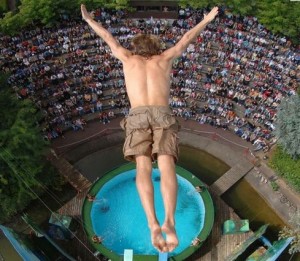 My UnConference – because in the end isn’t it really all about me. The conference itself, for those who have not attended one, is an organic affair with participants suggesting their own topics for break out suggestions, entrepreneurs, VCs, attorneys, consultants, marketing pros, members of the 4th estate are all sharing the same oxygen, and for the most part, looking to connect. What I find most challenging going to ‘high tech’ conferences is that although my company is producing software for the AECO (Architectural Engineering Construction Owner) Community, and although this is technically one of the biggest industry in the world at $4.5 trillion give or take some billions, what it is not is web 3.0, cloud, crowd sourcing, SaaS platform, which makes it intrinsically unsexy in these parts so finding people that ‘digitizing buildings’ or ‘capturing the built environment’ resonates with is few and far between. However, what it does do is let me practice honing my message so it does resonate more with people not in the industry and still let’s me connect with pros who have had experience with developing software, dealing with VARs (Value Added Resellers), valuing companies in all stages, etc. so regardless if you meet the right person, you’ll have to work hard not to learn something.
My UnConference – because in the end isn’t it really all about me. The conference itself, for those who have not attended one, is an organic affair with participants suggesting their own topics for break out suggestions, entrepreneurs, VCs, attorneys, consultants, marketing pros, members of the 4th estate are all sharing the same oxygen, and for the most part, looking to connect. What I find most challenging going to ‘high tech’ conferences is that although my company is producing software for the AECO (Architectural Engineering Construction Owner) Community, and although this is technically one of the biggest industry in the world at $4.5 trillion give or take some billions, what it is not is web 3.0, cloud, crowd sourcing, SaaS platform, which makes it intrinsically unsexy in these parts so finding people that ‘digitizing buildings’ or ‘capturing the built environment’ resonates with is few and far between. However, what it does do is let me practice honing my message so it does resonate more with people not in the industry and still let’s me connect with pros who have had experience with developing software, dealing with VARs (Value Added Resellers), valuing companies in all stages, etc. so regardless if you meet the right person, you’ll have to work hard not to learn something.
I was lucky enough to get some one-on-one time with Sim Simeonov from Fast Ignite, and James Gerhsweiller from Common Angels. My approach when speaking to them, which came in 20 minute blocks, was here’s a lot what I don’t know about, I need a 20 minute lesson, go. I asked Sim about the top things I could do when dealing with and developing a VAR network. I asked James how Vela Systems, a portfolio company of Common Angels, was finding success in the AECOM industry and how do you value a pre-revenue company, all good things.
I also saw Curt Nickisch, from NPR, with a mini boom microphone and struck up a conversation saying that I think we could start a cloud computing company by doing anything you do on the desktop today and stick an ‘ify’ on the back end, see chargify, shopify, backupify, asking Curt what he did a lot of, ‘audio editing’ he replied, “audiofy”, I replied, “stream audio to the cloud in real time for web sites, editing, etc.”, not sure if that’s going to catch on though.
What I find most exciting is connecting with other entrepreneurs because starting a business is a lot like going off the high dive, and hearing people’s stories about how they climbed the ladders, making the jump is inspiring, maddening, and takes its own sort of person. In fact, I suggested my own break up room which I titled ‘The Room of Futility” – sharing your mistakes so others can learn, because while hopefully we call learn form mistakes were not always shouting from the roofs so everyone knows about them, and as an entrepreneur we usually remain sometimes unrealistically optimistic and learn and move on without documenting it. One of the top things that came out and brought to the front by Nicolas, was ‘unwritten agreements’ which truly will bite in you in the ass every time, could be an equity split, strategic partnership, whatever, but get it in writing, expect the best, plan for the worst. Also I find speaking with founders, let’s you drop your guard, you’re not giving an elevator pitch, you’re not trying to impress, or raise money, your sharing ideas, and to me getting things out in the open sparks more connections and innovations than keeping it close because you think it’s genius. The fact of the matter is that everyone has good ideas, and I mean everyone, very few will execute, so get it out there an start iterating and making connections. So of the many people I met, Seth, who has internet in a box for a tradeshows, appropriately called Tradeshow Internet, which I thought was a great idea. Having set up tradeshows and being bowled over at the laundry lists of costs this seems to be a homerun. For example, oh, you want electricity in the booth, ummn, yeah, that’s $650 for a duplex, you want internet, $1200, Seth will deliver you a box, plug n’ play, internet enabled for 4 computers, boom, when your done, put it back in the box, slap the prepaid sticker on it, done, your internet at the tradeshow for 15% of the cost of getting it the traditional way, bang, that works. I met Mike, who’s son had developed an app that tracks speed based on the roads your on and can report back to you if your kid, your wife, your dog, is speeding, even better they have a fleet app that tracks, logs, driving performance, that can be used with insurance companies to drop insurance rates if they are doing the speed limit on a regular basis, awesome. Met the founder of drupal, Dries who’s for profit company, Acquia, seems to be going great, we spoke a bit about organizational behavior, and how important it is, something that escaped me in business school, and he told me that he still interviews any candidate that they are hiring, he might be the last one to interview and they already went through many hoops to finally get in front of Dries, but helps insure that they are getting the people most aligned with Dries vision.
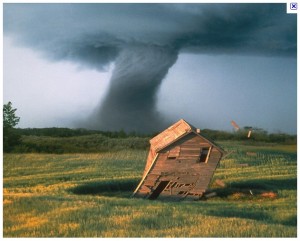 And almost lastly, we were asked at the end of the session to write on yellow cards to finish the sentence, at unconference…….., and I wrote “I met the people I was supposed to”, and I need to relate this story. I mentioned that it’s sometimes difficult to find people who my particular business might resonate with, although it’s being teed up as an energy modeling tool and getting a bigger response, but at the very beginning of the session we were asked to turn around and introduce ourselves to those around us, I turned around and introduced myself to Kairos Shen, who is the Director of the Boston Redevelopment Authority, and probably the only one at the conference who I could say, ‘we enable people to digitize buildings’ and then follow up with ‘we help capture the built environment for energy modeling and existing conditions’ and he automatically gets it, who replies with, that’s awesome, because so much happens downstream that having accurate plans, accurate models, can help short circuit problems, save time, save money, etc. and I am thinking man what a great way to start a conference, and then Kairos follows up with, ‘You’re the guy Bill wanted me to to meet.’ Bill Warner is a tornado, he started Avid, started Wildfire, and to my mind has stuck a turbo charger on the whole community of business starting, and turned up the oxygen, among so many initiatives he is the force behind the unConference, and the fact that beyond doing all this, he is reaching down that far through all the attendees, and matching people up, holy sh*8, you know how sometimes we find people who are perfectly suited to what they are doing, maybe a teacher, rec director, etc. and you feel lucky you met up with them, well we’re lucky Bill is driving this bus, because he is awesome at it.
And almost lastly, we were asked at the end of the session to write on yellow cards to finish the sentence, at unconference…….., and I wrote “I met the people I was supposed to”, and I need to relate this story. I mentioned that it’s sometimes difficult to find people who my particular business might resonate with, although it’s being teed up as an energy modeling tool and getting a bigger response, but at the very beginning of the session we were asked to turn around and introduce ourselves to those around us, I turned around and introduced myself to Kairos Shen, who is the Director of the Boston Redevelopment Authority, and probably the only one at the conference who I could say, ‘we enable people to digitize buildings’ and then follow up with ‘we help capture the built environment for energy modeling and existing conditions’ and he automatically gets it, who replies with, that’s awesome, because so much happens downstream that having accurate plans, accurate models, can help short circuit problems, save time, save money, etc. and I am thinking man what a great way to start a conference, and then Kairos follows up with, ‘You’re the guy Bill wanted me to to meet.’ Bill Warner is a tornado, he started Avid, started Wildfire, and to my mind has stuck a turbo charger on the whole community of business starting, and turned up the oxygen, among so many initiatives he is the force behind the unConference, and the fact that beyond doing all this, he is reaching down that far through all the attendees, and matching people up, holy sh*8, you know how sometimes we find people who are perfectly suited to what they are doing, maybe a teacher, rec director, etc. and you feel lucky you met up with them, well we’re lucky Bill is driving this bus, because he is awesome at it.
